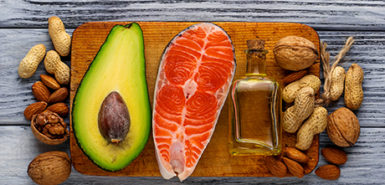
The holidays are here. Soon enough, it will be time to pull out the recipes to begin holiday baking.
As you read through your recipes, have you ever given thought to the ingredients?
Holiday baking often includes pies, cookies, pastries and other traditional family desserts, possibly handed down over several generations.
But when these recipes were created, there was less focus on the nutritional quality.
Nowadays, there is much more awareness of how the food we eat affects our health.
So how do we incorporate favorite family recipes into our healthy diets?
Understanding the role of the ingredients is important. Fats are a common ingredient in most baked goods. These fats contribute to the taste, texture, flavor and even overall quality of the product. The type of fat used is the next concern.
Four fats
There are four types of fats: saturated, trans, monounsaturated and polyunsaturated.
Saturated and trans fats are typically solid at room temperature—think butter or shortening—and they contribute to raising cholesterol levels.
Monounsaturated and polyunsaturated fats are liquid at room temperature—olive oil is a good example—and they can actually lower cholesterol levels.
Different recipes perform better with different fats, solids versus liquids. Pastries, such as a pie crust, tend to require a solid fat for optimal flakiness, and they may have a more mealy texture if a liquid oil is used.
A quick bread uses an oil, a healthier fat option, for taste, texture and leavening.
Some helpful tips for making recipe substitutions:
- Instead of using lard or shortening with hydrogenated fats, choose brands that contain zero trans fats on the food label.
- Experiment by simply reducing the amount of fat or oil by one half.
- Use applesauce, mashed banana or mashed avocado instead of oil.
- If using oil, choose oils with more health benefits, such as canola or olive oil.
- Use two egg whites or 1/4 cup egg substitute in place of one egg.
- Use evaporated skim milk instead of cream.
Making substitutions to recipes may change the end product, but knowing that you have made healthy changes may make this acceptable to you.
 /a>
/a>
 /a>
/a>
 /a>
/a>